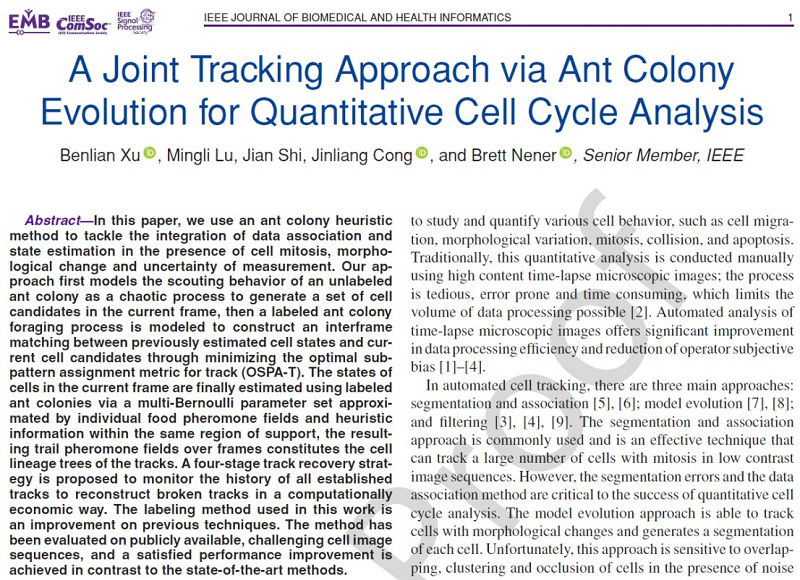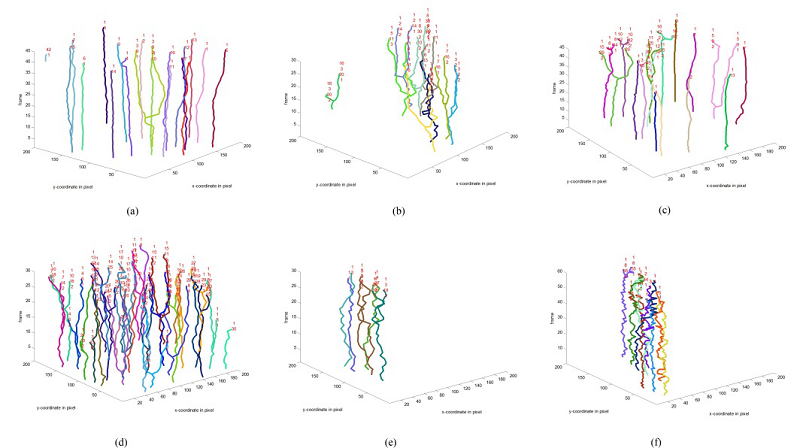Professor Xu Benlian recently published an academic paper in the IEEE Journal of Biomedical and Health Informatics

The academic paper "A Joint Tracking Approach via Ant Colony Evolution for Quantitative Cell Cycle Analysis" written by Professor Xu Benlian of the School of Mechanical Engineering was accepted by the "IEEE Journal of Biomedical and Health Informatics" (TOP journal).
This achievement mainly addresses the integration of data association and state estimation caused by target splitting, deformation, and dynamic changes in the number of targets in the field of multi-target video (image sequence) tracking, and proposes a more computationally efficient tag ant colony multi-target tracking algorithm . This method first models the reconnaissance behavior of the unlabeled ant colony as a chaotic process, and generates a set of candidate targets in the current frame; on this basis, establishes a foraging process of the labeled ant colony by minimizing the optimal sub-mode allocation Measure (OSPA-T) to construct an inter-frame match between the previously estimated target state and the current candidate target. Finally, the Do Bernoulli parameter set approximated by the tag ant colony through the food pheromone field and heuristic information is used to estimate the state of the target in the current frame, and the obtained trajectory pheromone field constitutes the target pedigree tree of the trajectory. This method has been tested on multiple target tracking data sets and achieved good tracking results. This work is the result of cooperation with Professor Brett Nener of the University of Western Australia in Australia. It has received the Overseas Study Program of the Jiangsu Provincial Department of Education, the National Natural Science Foundation of China (Grant No. 61673075,61876024).
Paper link: https://ieeexplore.ieee.org/document/9233941

Multi-target proliferation spatiotemporal trajectory tracking examples of 6 image sequences

Examples of Chaos Ant Colony Search Results

Example of trajectory and food pheromone field distribution
